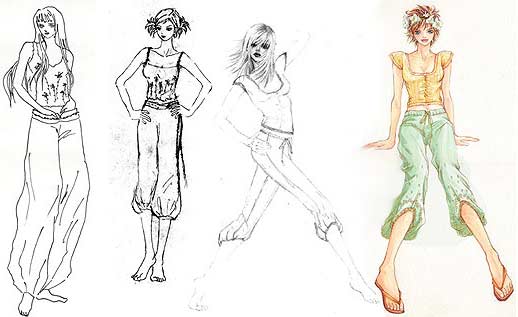If you've always wanted to get involved in fashion design but never really knew where to start, there are many websites that will give you tips, tricks, ideas and even platforms in which to practice and come up with ideas on your own. Anyone can take pen to paper and come up with fashion design but online fashion design will let you know what's in style nowadays and it will have you up and running like a pro in no time. All you need to do is find one or a few websites, which will let you practice online fashion design. You never know, with enough practice you could be the next runway fashion designer making clothes for highly paid fashion models with your name in lights. If you use your favorite search engine, you should have no problem finding online fashion design websites. Some may ask you to pay a membership fee while others may be free. You may want to practice with the free ones first just to make sure you like it and to see if you have a knack for it before you shell out big bucks on a high priced online fashion design website. Some of the free sites allow you to shop for fashion online as well and that's how they pay for their sites so look around and you're sure to find a site that works for you.
.jpg)
Fashion Design

Fashion Design

Fashion Design

Fashion Design

Fashion Design

Fashion Design

Fashion Design

Fashion Design

Fashion Design

Fashion Design

Fashion Design

Fashion Design

Fashion Design

Fashion Design

Fashion Design
Online fashion design makes designing clothes easy. You'll usually start with a virtual model and then you can search through various styles of clothing to dress that model. The great thing about online fashion design is that you use your mouse to add or remove clothing whenever you want to. If something doesn't work, simply click the mouse and it's gone. Add this or that and you'll soon find something that works. Most online fashion design websites want to see the work you've used. They will sometimes post styles and fashions from users just like yourself. When you find something that really works, show it off with the other users on that site. You never know when someone will see it and will want to see more of what you can do. This could be how you are discovered as an online fashion designer. If nothing else, you'll get better at online fashion design and you'll find a hobby you really excel in and have a lot of fun with.
 Vintage Clothing - 20th Century Fashion Eras
Vintage Clothing - 20th Century Fashion Eras Vintage Clothing - 20th Century Fashion Eras
Vintage Clothing - 20th Century Fashion Eras Vintage Clothing - 20th Century Fashion Eras
Vintage Clothing - 20th Century Fashion Eras Vintage Clothing - 20th Century Fashion Eras
Vintage Clothing - 20th Century Fashion Eras Vintage Clothing - 20th Century Fashion Eras
Vintage Clothing - 20th Century Fashion Eras Vintage Clothing - 20th Century Fashion Eras
Vintage Clothing - 20th Century Fashion Eras Vintage Clothing - 20th Century Fashion Eras
Vintage Clothing - 20th Century Fashion Eras Vintage Clothing - 20th Century Fashion Eras
Vintage Clothing - 20th Century Fashion Eras




